
© Railway Wonders of the World 2012-


A Railway Which Goes to Sea
How Key West -
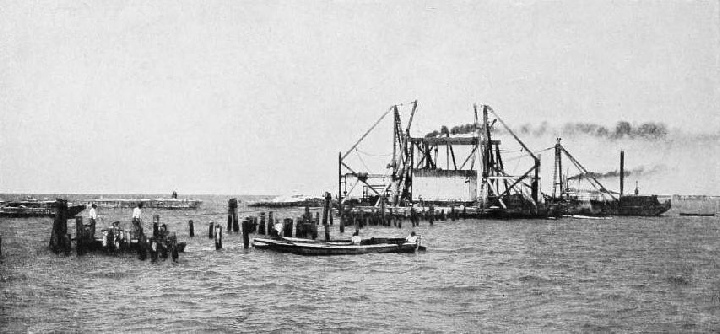
“ON THE GRADE”.
LYING off the coast of Florida, and about midway between the mainland and the island of Cuba, is a small low-
During the Cuban campaign this base of operations loomed large in the public eye, but it suffered from one serious disadvantage: it was isolated completely. Approach was possible only by water. Running shorewards from this insular station, in a gentle curve, is a chain of coral islands, designated “keys”, divided by wide deep channels.
It is quite possible that Key West, after Cuba had been wrested from the Spanish, might have relapsed back into an unknown and uncared-
The linking of Key West with the mainland constitutes one of the most thrilling and daring conquests of the railway. At the same time its fulfilment is due entirely to one man of remarkable perspicacity and dauntless courage -
In 1883 this financial and organising magnate was forced to take a spell of rest and recreation to recuperate. Instead of coming to the famous resorts of Europe, he went to Florida, to a point as far south as the railway could take him. This was St. Augustine. It was by no means a pleasure trip to gain this point, as travelling comfort and convenience, in the generally accepted sense of the word, ended at Jacksonville, the capital of the State. True, the steel highway went beyond, but it was a narrow gauge line which ran southwards to St. Augustine and Palatka -
St. Augustine itself was a striking counterpart of Sleepy Hollow, but Mr. Flagler found that it enjoyed an ideal winter climate, while he saw that the surrounding country possessed vast agricultural possibilities if exploited in a progressive manner. Americans were in the habit of seeking the European Riviera in the winter, and yet they did not know that at their very doors, within a few hours’ run of their offices, was a clime equal in every respect to that of the Sunny Mediterranean.
The holiday-
Simultaneously the favourite resort, Ormond, began to grow, together with Daytona, famous for its stretches of sands, whereon the highest motor speeds in the world have been attained. Not satisfied with this measure of success, the guiding spirit commenced to drive his railway farther to the south, and in 1894 another glorious resort, 800 miles south of Jacksonville, came into being. Still lie did not pause. While on one of his periodical visits to the south Mr. Flagler hired a spring wagon, and with this primitive conveyance set out on an exploration trip, tolerating all the discomforts incidental to an overland journey through an unpeopled country with the greatest good humour. He travelled as far as Miami, on Biscayne Bay. Here he found a magnificent natural harbour, with similar, if not superior, climatic and agricultural conditions; accordingly he once more set his engineers to work to lay the track to Miami, which was entered in 1896.
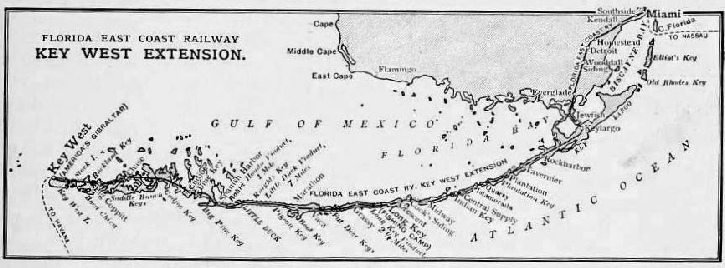
MAP OF THE KEY WEST EXTENSION RAILWAY.
Then came a halt. There was no idea of carrying the railway farther. However, the tempting stories of the attractive climate and rich soil in the lower part of the peninsula, combined with the growing Cuban trade, proved irresistible. Then in a flash came the thought, “Why not take the railway rigid into Key West?”
It was a bold proposal, but the governing hand had become familiarised with the characteristic of the coral keys, and the waters which laved them. He called in his first lieutenant, Mr. Parrott, the general manager, to whom he adumbrated his idea. They discussed the commercial possibilities of such a project, and as the railway manager saw no reason why it should not be accomplished, he was requested to investigate the proposal more intimately, and to report upon its feasibility. Mean-
The surveyors set out in 1904 and drove their reconnaissance in all directions. South of Homestead was a forbidding stretch of country where the mainland is low-
As the reports came in Mr. Parrott weighed them up, studied the different proposed routes, and finally evolved one which he considered would meet all requirements, and which was the best possible.
Then he revealed the fruits of the surveyors’ labours to his chief. It was a startlingly daring proposal; the cost would be prodigious. No estimate could be advanced, as the unknown and unexpected lurked on every hand. But the financier was not perturbed by the expenditure. Finally, he turned and said, “You are convinced that this railway can be built?’’
“Positive.”
“Right; go ahead.”
There the discussion ended.
The general manager set out to complete the task of carrying the railway to Key West, 128 miles beyond Homestead. 14 miles of which lay across the low-
The first move was to find an engineer of sufficient ability, resource, and courage to attack the task. Fortunately, at Tampico, across the Gulf of Mexico, large docks were being built at the time. Some pretty problems had tripped up the engineer on this enterprise from time to time, but he had handled them with excellent skill and ingenuity. Mr. Parrott decided that this was the very man for the new undertaking; so accordingly he approached Mr. Meredith and invited him to assume responsibility for the railway project. The request was accepted, and, as it proved, a better man could not have been found.
From the moment he attacked the enterprise its successful issue never was in doubt for a moment. The first sod south of Homestead was turned in April, 1905, Driving through the “Everglades” was monotonous. The ordinary means of building the embankment by the aid of steam shovels was useless, as the soil is entwined thickly with the straggling roots of swamp scrub and mangrove trees. So a new method was adopted. Powerful dredgers were brought up, and they gnawed their way forward through the marshes digging a canal on either side of the grade. Their orange-
But it was on the sea stretches that the greatest demands were placed upon engineering skill and organisation. Taken on the whole, the islets between the mainland and Knight’s Key were found crowded somewhat closely together, so that the sea stretches were reduced in length. Between some of the islands the water was found to be so shallow as to enable an earthen embankment to be raised. But here and there the water gap was found to be very wide and deep, demanding trestling, masonry viaducts, and steel bridges. Fortunately. the engineer was spared a tedious search for suitable found-
At the same time, as many of the channels between the keys are used by vessels in passing to and from the Mexican Gulf ports, the rights of navigation had to be respected. This situation was met by spanning these interruptions by swing bridges. Between the mainland and Knight’s Key each swinging span is 99½ feet in length, so that ample clearance is offered to enable vessels to pass through.
While the task bristled with engineering problems of a peculiar character, the care of the thousands of men engaged on the grade was far more searching. It was impossible to house them on the land, so floating quarters were prepared. Flat-
At Miami a large hospital was established, whence were hurried all those who were stricken down by serious accident or disease; while along the grade on were distributed other smaller medical depots to extend temporary aid and to minister to trivial mishaps and illness. Notwithstanding the fact that the navvies were of every shade and colour, and were housed in unavoidably confined quarters on the floating barracks, a remarkably clean bill of health was carried throughout the seven years work was in progress. True there was a certain mortality, but the abundant supplies of good food, medical care, and the Florida climate frustrated all attempts of an epidemic to secure a foothold.
The floating equipment for the prosecution of the work was just as varied as the toilers themselves. It was a big fleet of schooners, stern-
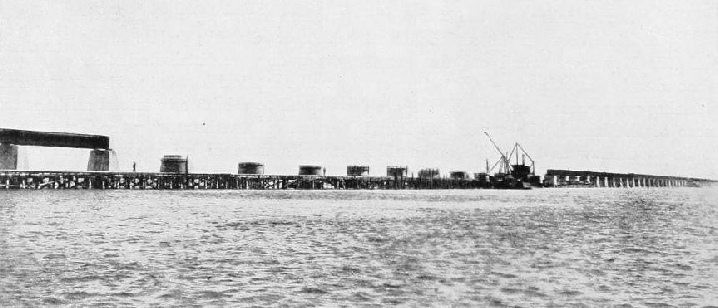
THE RAILWAY EAST OF PIGEON KEY, showing piers and bridge construction.
The first big stretch of viaduct over the sea arose when Long Key was reached. This is a concrete arch structure two miles in length, comprising 180 semi-
A layer of concrete was dumped upon the rock to a depth of 5 feet or so, and upon these plinths commenced the piers proper. The superstructure has been built on the reinforced concrete principle, but the builders, not being certain of the behaviour of the steelwork under the action of salt water, the arches have been so designed that the steel reinforcement has to perform no responsible work. Timber forms or moulds were employed for the building of the arches, which were built alternately, so as to guard against expansion cracks. The stone for the concrete was blasted out of the sea-
Where the railway crosses the shallow water openings and the low swampy keys dredges and travelling excavators served to pile up the solid earthen embankment. In some places pipe-
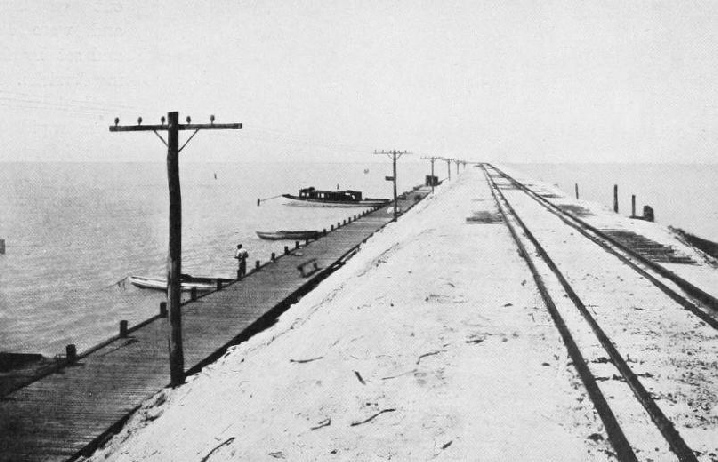
THE FINISHED EARTHEN EMBANKMENT IN THE “SHALLOWS”' BETWEEN THE KEYS -
When the line was within measurable distance of Knight’s Key, the engineer-
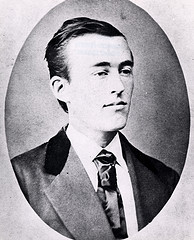 “In memory of Joseph Carroll Meredith, chief engineer in the construction of the Key West extension of the Florida East Coast Railway, who died at his post of duty, April 20th, 1909. This memorial is erected by the railway company in appreciation of his skill, fidelity, and devotion in this last and greatest work of his life.”
“In memory of Joseph Carroll Meredith, chief engineer in the construction of the Key West extension of the Florida East Coast Railway, who died at his post of duty, April 20th, 1909. This memorial is erected by the railway company in appreciation of his skill, fidelity, and devotion in this last and greatest work of his life.”
JOSEPH CAROLL MEREDITH, Chief Engineer in the construction of the Key West extension.
Mr. Meredith’s mantle descended upon his right-
Knight’s Key was reached in February, 1908, and here a short pause was made to enable arrangements to be completed for the attack upon the second section. The first stretch of 7 miles bristled with difficulties, as it ran through water ranging from 1.8 to 22 feet in depth. Here the concrete arch viaduct was impossible, so a steel bridge was adopted. This is a massive piece of work, comprising 316 deck girder spans each of 80 feet, 19 spans of 59¾ feet over the deepest part, and 210 arches of 53 feet span across the shallower waters, giving a total length of 37,545¼ feet of steel work. In addition, as the railway crosses the navigable Moser Channel, a swing draw bridge is placed over this fairway. This is of the through truss type, 253½ feet in length, and is of interest because the mechanism for operating the bridge is driven by a petrol engine.
At Bahia Honda another wide stretch of sea entailed bridging to the extent of 5,100 feet. This part of the work was somewhat more formidable than that out of Knight’s Key because, the water running up to 30 feet deep, a through truss, instead of a deck girder bridge, was selected over the deeper part of the strait. The total length is divided into 36 spans -
When the bridging was commenced out of Knight's Key the setting of the steel was let out to contract, but this arrange-
Will the railway stand? This has been a favourite theme of discussion ever since it was projected. The builders themselves have little apprehension on this score. Their greatest anxiety is in regard to the best measures to adopt to protect the enormous stretches of steel comprising the bridges from the ravages of rust. The salt water sets up extensive and rapid corrosion. Up to the present no paint has been discovered which will prevent this completely. The engineers have tried, and still are testing, a whole range of so-
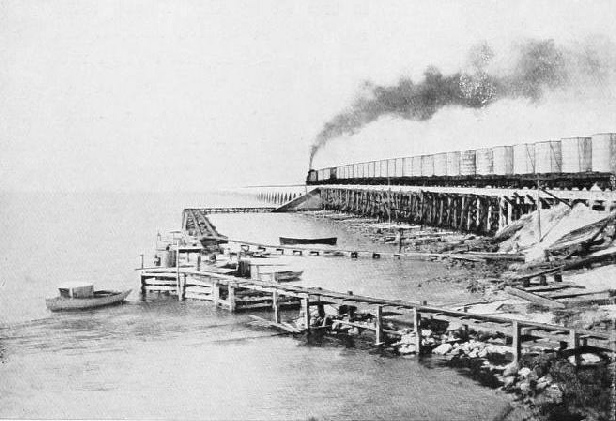
“THE WATER SPECIAL”.
Two conical wooden tanks, each of 3,000 gallons capacity, are mounted upon each truck.
So far as the hurricane and the tropical storm are concerned, the works have been subjected to as fierce onslaughts of the elements as could be conceived, and yet without giving the slightest sign of capitulation to these blind forces. During 1906 a hurricane swept over the works. The engineer-
When, therefore, another warning came in 1909, more heed was given. All the equipment, was anchored safely, and the houseboats were towed to shelter. This was a fortunate circumstance, inasmuch as this storm was the most severe which ever has been known to assail the coast, of Florida. Very few lives were lost, and although the wind attained a velocity of 125 miles per hour, the line escaped unscathed.
Although the railway is of an unprecedented nature, the rapidity with which it was carried to completion constitutes an outstanding feature. It was the original intention to have the track finished and ready for traffic by January, 1913. but the 1911 New Year’s gift to the engineers was the order to have the line open by January, 1912, at all hazards. There was a general speeding-
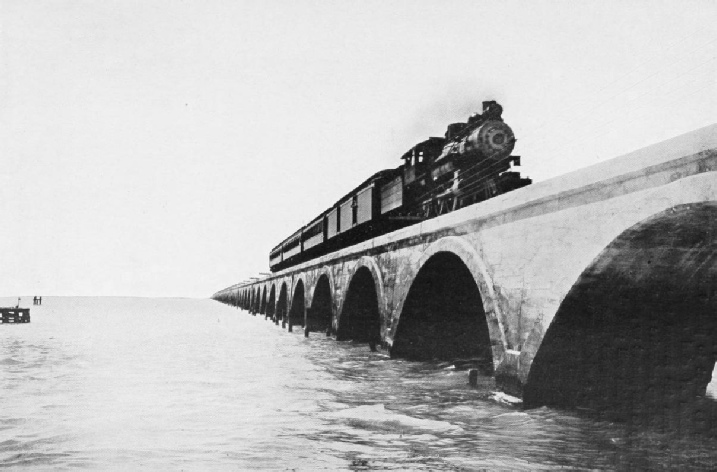
THE “OVERSEA LIMITED” EN ROUTE FOR KEY WEST. On the viaduct speed is restricted to 15 miles per hour.
The single track is laid with 70-
The train service comprises two expresses daily, in addition to freight, and a water train. The crack express is “No. 87”, The “Oversea Limited”, a solid Pullman, which runs through from New York daily. The 522 miles between Jacksonville and Key West are covered in 19 hours 5 minutes. The second train is a local express between the two points, which completes the trip in 21 hours.
So far as the running time is concerned, an average of 27.35 miles an hour may not appear inspiring. But the train has to respond to numerous service slacks and stops when traversing the oversea section.
On the concrete viaducts and steel bridges the speed is limited to 15 miles an hour, while on the reverse curves and trestles it is reduced to 10 miles an hour.
The water train is one of the most important in the whole service, seeing that all the water tanks between Jewfish and Key West have to be replenished from the mainland, no fresh water being obtainable between the two points. Each deck car is fitted with two conical wooden tanks, each containing 3,000 gallons. These are filled at Everglade Station, on the mainland, where a pumping and storage plant has been laid down. Until the railway was completed fresh water cost a halfpenny per gallon at Key West.
Towns are springing up alongside the railway, and a long string of popular resorts are coming into fashion even upon the keys themselves, where sport, rest, and recreation are offered in a kindly warm, invigorating climate. But there is one circumstance that towers above all others -
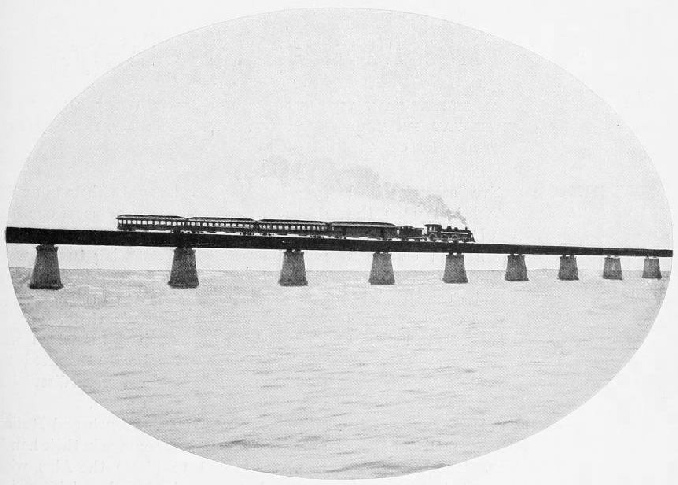
MOSER CHANNEL BRIDGE, 7¼ miles long.
[From Part 14 of Railway Wonders of the World by Frederick A. Talbot]
You can read more on “Out To Sea By Train”, “Railway Curiosities” and “Train Ferries” on this website.